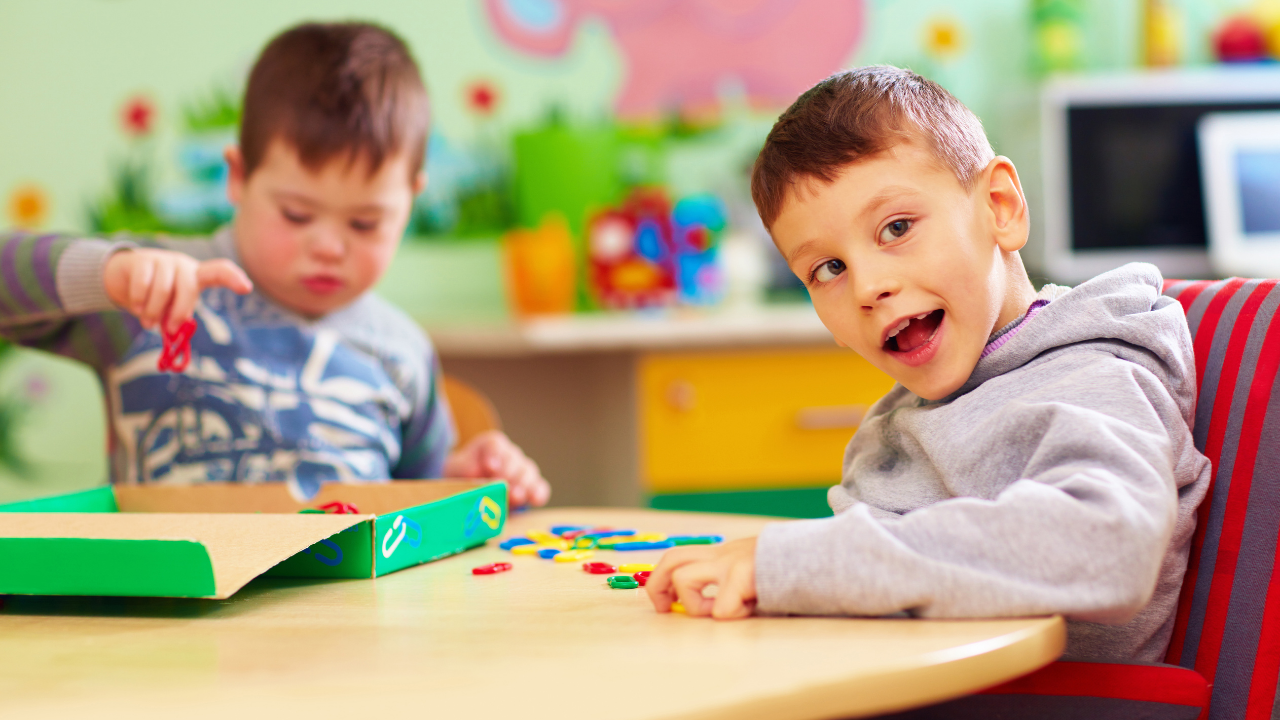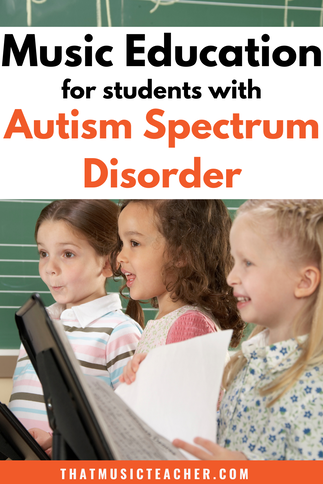
Music Education for Students with Autism Spectrum Disorder
Feb 11, 2020 Across the United States there are music educators that are teaching students with varying levels of exceptional needs. One of the sub-sets within this student population are students with Autism Spectrum Disorder (ASD).
Just as ASD itself lies upon a spectrum, so too does the need for accommodations and supports for students with ASD to have successful musical experiences.
Unfortunately, music educators often find themselves ill-prepared to meet these exceptional needs. I spent my first year outside of the music classroom in various intervention and special education roles. I learned more about teaching students with exceptional needs in that year than I ever thought I could.

Least Restrictive Environment
The Individuals with Disabilities Education Act (IDEA) mandates that all students be taught in the least restrictive environment, or LRE. The implementation of this requirement often becomes students with exceptional needs attending music class with age-similar typical students. For others it might mean receiving music instruction as a self-contained classroom, while other students may receive a combination of both.
Depending on the severity, students with ASD are often mainstreamed with age peers on the basis of social development. In these cases, music curriculum is modified, and the student is not expected or required to meet the same educational goals as his typical peers.
In cases of social mainstreaming, the argument relies on students receiving valuable social interactions with like-aged peers. However, the reality is that mainstreaming may not be in the most appropriate setting for music education.
Social Mainstreaming and Adapting Instruction
In social mainstreaming, the primary concern is rarely music instruction, but providing opportunities for students to develop their social skills. However, for many students with ASD the musical content being taught to their typical peers may be too advanced for them to fully comprehend and retain.
In this setting, music educators must adapt activities and curriculum in order for students with exceptional needs to progress musically. Music educators must often use creative problem solving in order to apply modifications and accommodations for students.
Mary Adamek describes the following methods of adaptation that music educators can employ in their classrooms:
-
Adapt the extent to which the student is involved in the task, based on the child’s abilities.
-
Adapt the skill level needed to perform the music task.
-
Increase the amount of personal assistance provided to a specific learner to promote success.
-
Adapt the ways in which instruction is delivered to students.
-
Adapt how the student can respond to instruction by varying the types of responses expected.
-
Adapt the goals or outcome expectations for the student, while using the same materials for all students.
The way in which we as music educators implement any combination of these adaptation strategies will vary greatly between students, as all students will have differing levels of musical success without any instructional adaptations. Special educators and any related services therapists can help us determine to what level each student may need adaptations in a classroom with typical peers.
Self-Contained Music Instruction
While there is inherent value in allowing students to experience music through what may be their least restrictive social environment, this often comes at the expense of their least restricting musical environment.
Many of the most common practices among primary music educators is teaching by rote. While this is often regarded as a highly effective strategy for teaching typical students, it can hinder students with ASD. Students with ASD respond differently to imitation than their peers who are typical.
Research suggests that students with ASD imitate the actions of others with a different level of understanding and fluidity than their typical peers. This difference in ability to learn through imitation puts students with ASD at a disadvantage in the mainstream music classroom, as children often learn new skills through imitation of those around them. For this reason, imitative behaviors should be encouraged in students with ASD, but music educators need to properly understand the associated difference in language, play, and joint attention.
Students with ASD may not appear to be responding to the music, but this can easily be attributed to the difference in communication. Specifically, students with ASD tend to struggle with Joint Attention, or the ability to share the attention of observing an event or object with another individual.
For example, many students with ASD struggle with making eye contact, or focusing their attention on a specified object. Due to multiple constraints, initiating Joint Attention in a mainstreamed music classroom would be difficult, if at all possible. However, working within a self-contained classroom, music educators can help use music as a medium to encourage bids for Joint Attention in our student with Autism Spectrum Disorder.

Why Not Both?
As previously stated, there are valuable aspects of having students with Autism Spectrum Disorder in both the self-contained and mainstreamed classrooms. Having students with ASD included with their typical like-aged peers allows them to develop the kinds of social skills they need to improve through interactions in the music classroom.
However, as stated previously, the goal in social mainstreaming is not for improving musical learning, but to expose students to differing social environments. If music educators were to allow our students with Autism Spectrum Disorder to experience music with their typical peers as well as with other students with ASD, they will be able to make both social and musical growth.
These students will be able to grow towards their social goals while attending music class with their typical peers; while attending in a self-contained environment can allow music educators to focus specifically on the musical goals of these students in a more direct setting.
Now What?
Music educators should always strive to allow all students to experience music in the way that best serves them individually. A student’s Least Restrictive Environment should always be respected, but the way this looks for each student will vary.
Some students with Autism Spectrum Disorder will be able to progress both socially and musical in a music classroom shared with their typical peers. Contrarily, others will require a smaller setting in a self-contained classroom to increase their musical skills and understanding.
Additionally, these self-contained music classes can also help students with their non-musical goals. Music educators should advocate for their students with ASD to receive appropriate instruction in both their social and musical Least Restrictive Environments.

Don't miss a beat!
New moves, motivation, and classes delivered to your inbox.
We hate SPAM. We will never sell your information, for any reason.


